I have to confess, it has taken me a while until I discovered northern Europe as a travel destination. Being a true summer person who absolutely loves the heat – and living in Germany where warm and long summers are not at all guaranteed – my travel priorities have been to visit places that promised summer feeling.
A business trip to Helsinki in Finland a couple of years ago changed all that. I immediately fell in love with the breathtaking Nordic landscape, that energetic and yet relaxed mood so typical for this area, the excellent Nordic cuisine and an approachable, open and friendly population.
Oslo, the capital of Norway, was one of the locations high up on my list and after my recent visit I cannot recommend it enough.
The city is relatively small, so it is ideal to walk and you can easily explore its main attractions over a weekend.
Somewhere – I can’t remember where – I read that Oslo is the greenest capital globally. Flying into Oslo Gardermoen airport and later walking around the city, I can’t but fully support this claim. It is not only that the city is surrounded by endless green forests, there are numerous large parks and green areas within Oslo itself, many streets are lined by trees, and you are also never far from Oslo Fjord with its many small islands covered by a thick vegetation.
Oslo is also one of the currently fastest growing capital in Europe and testimony to this are the many building cranes spread across the city.
Fun fact: Oslo is ranked to be one of the best coffee cities in the world. In fact, walking around you will notice there is no shortage of cafés and coffee shops.
In addition to drinking coffee, here are the things I recommend you should do on your first trip to Oslo.
Oslo Opera House
No doubt, Oslo Opera House was one of my favourite places. It’s a beautiful piece of architecture made of white marble and granite. It was designed to resemble a glacier, rising out of Oslo Fjord and features bold sleek lines. It is build in a way that you can walk up onto the roof, offering amazing views over the city and Oslo Fjord. It is also worth paying a visit to the inside, which is free to access on seven days a week.
Barcode Project


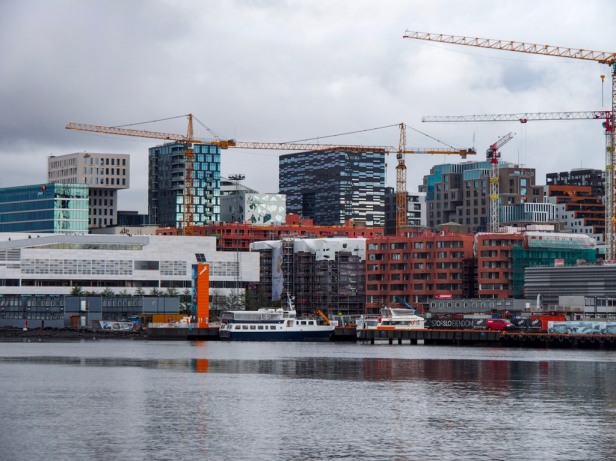
If you follow my blog, you will be well aware I am totally addicted to any quirky or modernist architecture. Located in the business district of Oslo, just behind the Opera, this modern high-rise development is called Barcode because of its particular design. It consists of twelve high-rise buildings of different heights and widths sitting close to each other and from a distance the complex resembles a barcode.
Karl Johan Gate, Norwegian Parliament and Royal Palace
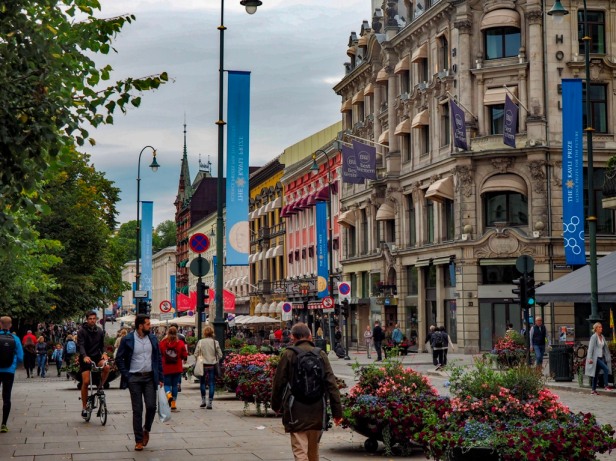

Karl Johan Gate, Oslo’s main city centre street, lined by many shops, restaurants and cafés is still clinging to its historic charm, spotting cobblestones and lots of colourful historic facades.
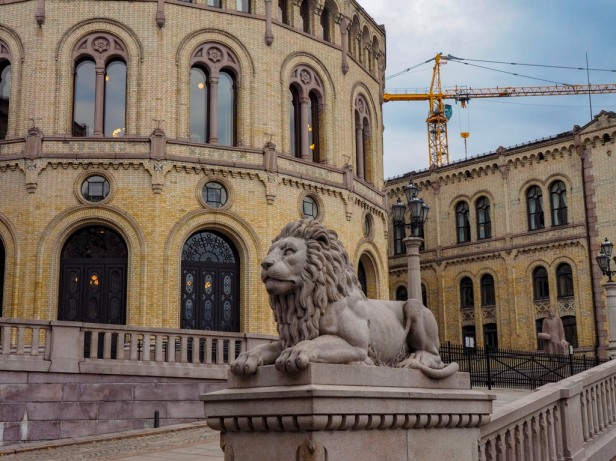
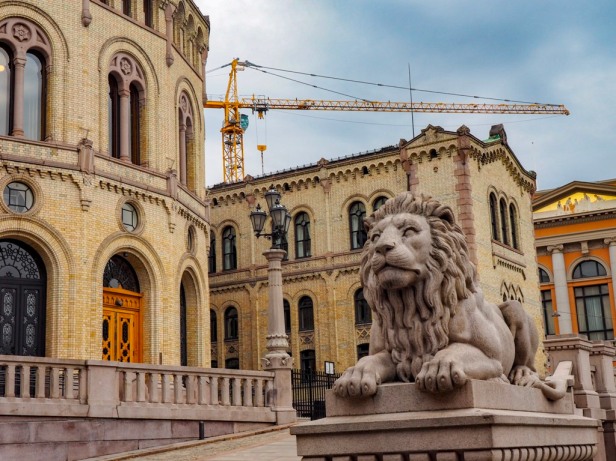
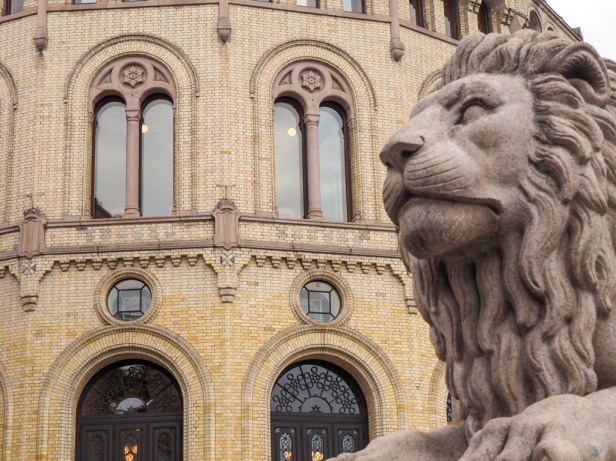
Along Karl Johan Gate, you will find the Parliament of Norway and the famous Norwegian Lion.
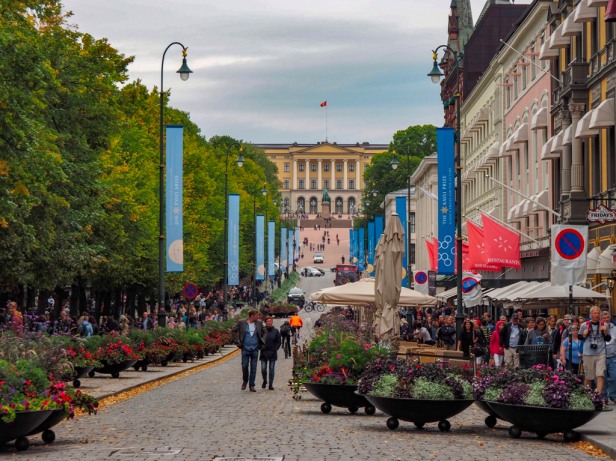
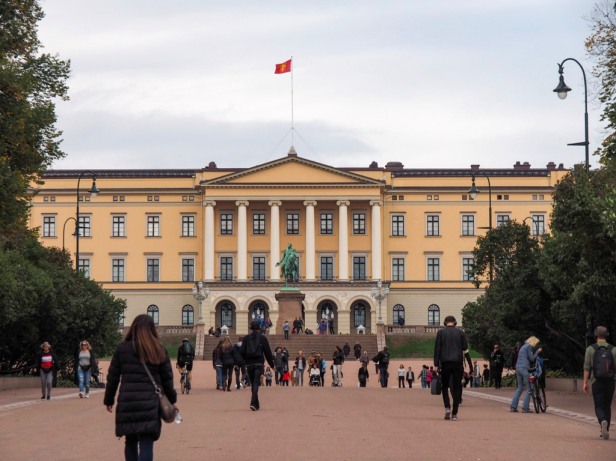
Finally, at the end of Karl Johan Gate you arrive at the Royal Palace. There are tours of the interiors offered for a few weeks in summer (from the end of June to mid-August), basically when the royal family is vacationing elsewhere. There is no access to the inside at any other time of the year but there is a daily change-of-the-guards ceremony hold at 1.30 pm, so time your visit to be there around that time.
Akershus Fortress
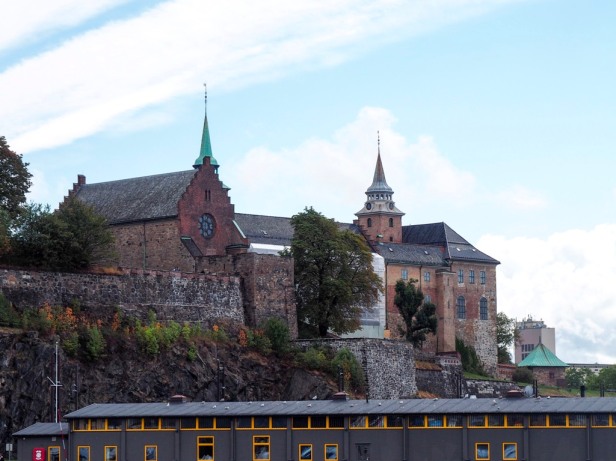
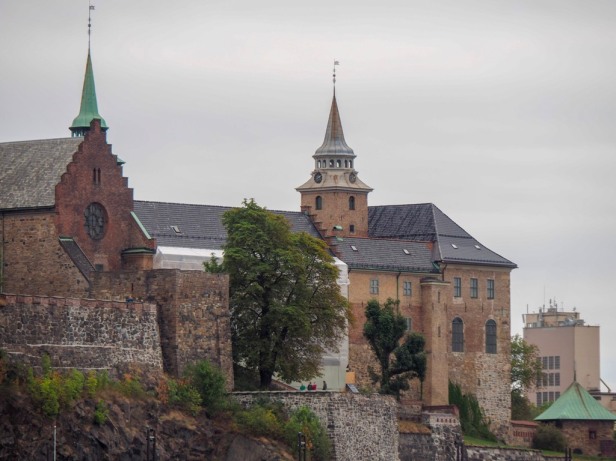

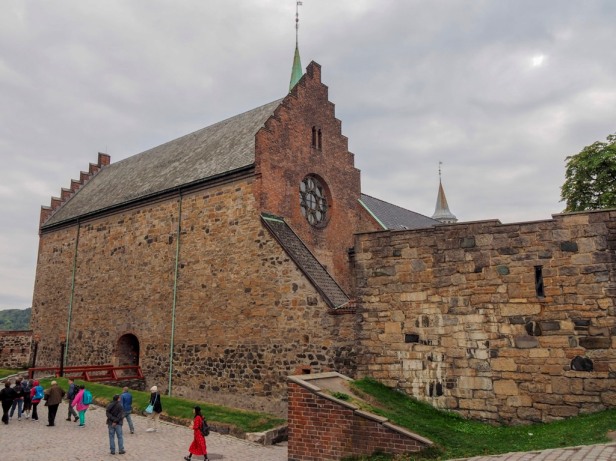
One of Oslo’s historic buildings not to be missed. Perched above the shores of Oslo Fjord, the fortress was built to protect the city from invaders at the end of the 13th century, and indeed has withstood every siege it ever faces. During the time of my visit, there were extensive renovations underway so unfortunately, parts of the complex including the beautiful small inner courtyard were closed to the public. Though I was a bid sad, taken positively, it was good to see a commitment to preservation of this important historic monument.
Oslo City Hall
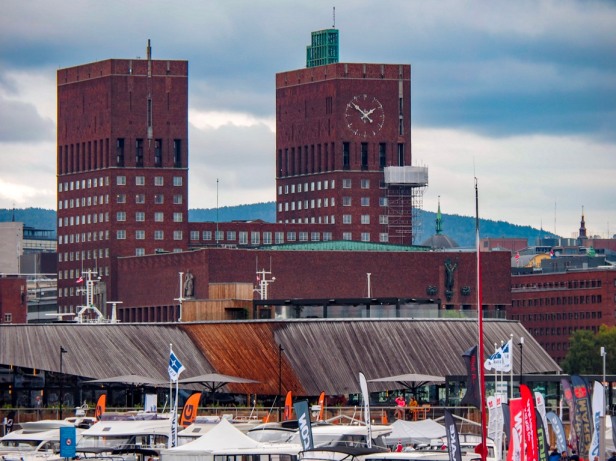
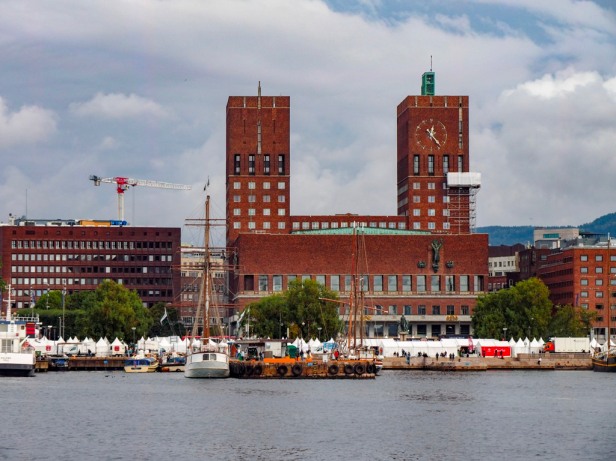
Built in the 1930s, the huge City Hall is a building that will easily divide opinions. Back in the day, the red brick structure must have been quite contemporary whilst today it is neither falling into this category nor is it by any means a historic building. Still it beholds a certain grandeur, dominating the location at the waterfront where it sits. Perhaps the more intriguing part of the building is the inside (entrance is free) where you will find beautiful paintings from the 1900s to 1950s, showing scenes of Norwegian history, culture and working life.
Nobel Peace Centre

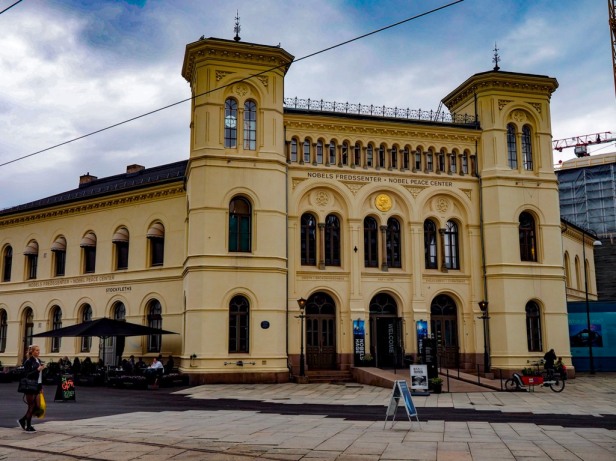
Though I for myself always think of Sweden and the Swedish royal family when the topic turns to the annual Nobel Prize celebrations, one of the most important Nobel Prizes, the Nobel Peace Prize, is actually being awarded in Oslo, with celebrations held at Oslo City Hall annually on December 10th. Oslo is also home to the Nobel Peace Centre just across the city hall at the start of Aker Brygge, where you can see a range of permanent and changing exhibitions that, according to the Centre’s website promote popular interest in issues relating to war, peace and conflict resolution.
Aker Brygge
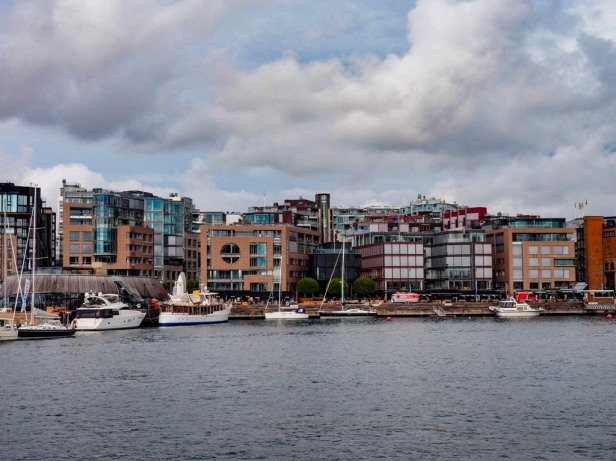
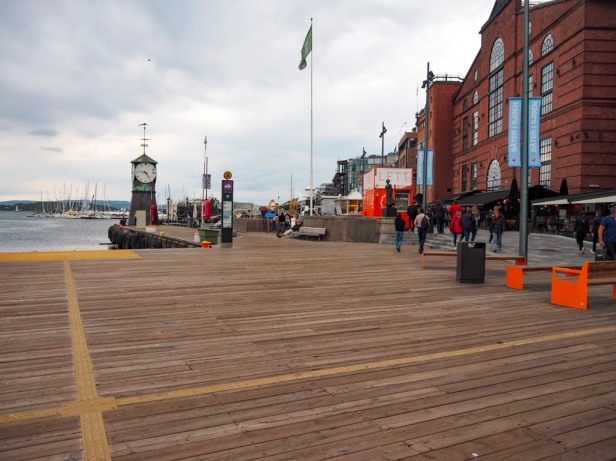
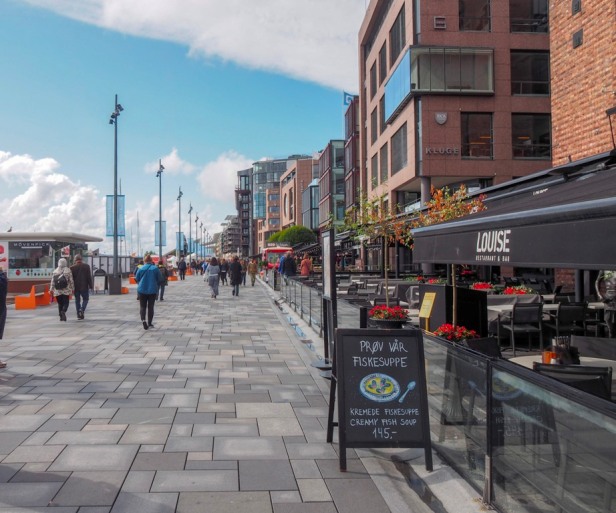
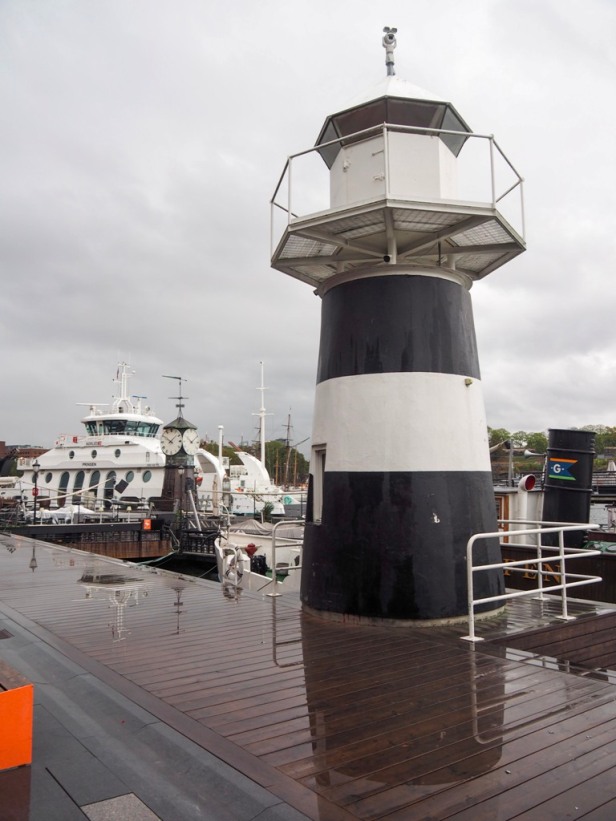
One of Oslo’s hippest new neighbourhoods, this beautiful waterfront area once used to be a busy shipyard. Today, the area boasts a mixture of old converted warehouses and modern buildings. Along the broad boardwalk (most of the area is car free by the way) you will find lots of restaurants, bars and cafés – many with al-fresco seating during the warmer summer months. In addition, there are also plenty of unique little fashion shops should you grave some shopping.
Tjuvholmen
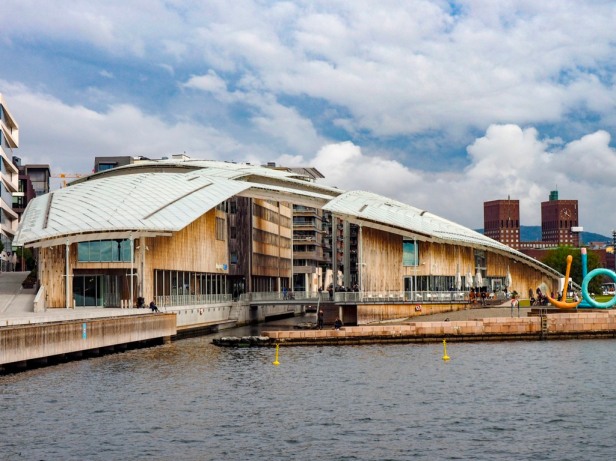
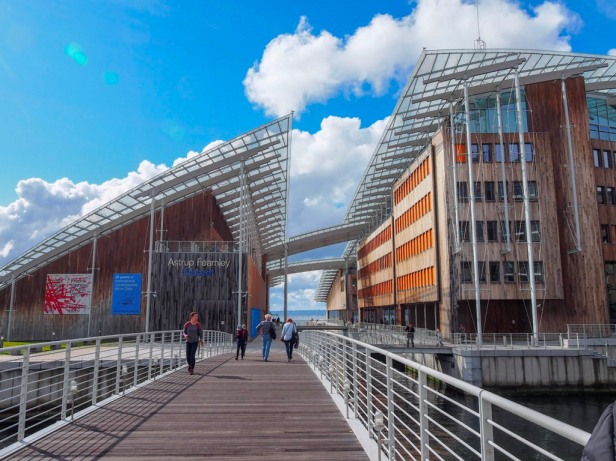
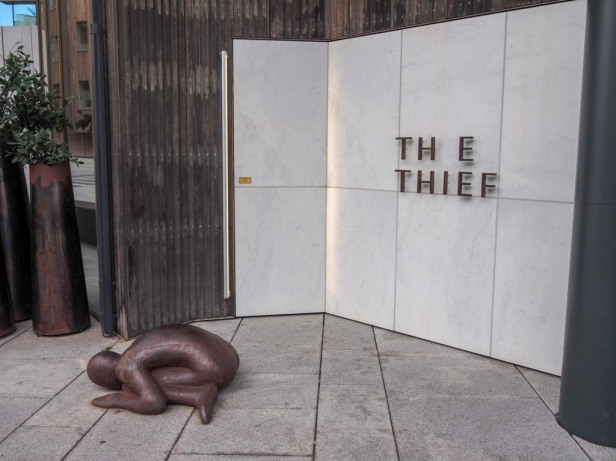
Also known as Thief Islet, this is one of Oslo’s newest boroughs and could be seen as a natural extension to Aker Brygge. Tjuvholmen is filled with cool architecture and elaborate outdoor spaces along Oslo Fjord. Its main attractions are the Astrup Fearnley Museum hosting a superb collection of modern and contemporary art with permanent and visiting exhibitions including works by Damien Hirst and Jeff Koons. While there, make sure you pop into The Thief Hotel for a drink at its beautiful Thief bar or during the summer on the rooftop. The hotel too hosts several pieces of contemporary art and is said to be the most luxurious in Norway!
Vigeland Park
This is definitely a place worth seeing. The park is actually an open-air museum panning 320,000 square metres, featuring 212 bronze and granite statures by Gustav Vigeland, and thus is the world’s largest sculpture park made by a single artist. All of the statues are part of Vigeland’s ‘wheel of life’. The most impressive – at least in my opinion – certainly is the central Monolith, an elevated totem composed of 121 human figures which alone took a total of 14 years to be carved from one giant piece of granite.
Oslo Fjord boat tour
Oslo is build around water and one of the best ways to explore the waterfront and surrounding islands is to go on a cruise around the harbour. You will not only see some of Oslo’s most interesting (new) waterfronts, Aker Brygge, Tjuvholmen and the Barcode area but also Oslo Opera House and later cruise along the bays and island within Oslo Fjord, including several small islands home to a maze of small summer houses. These typical Nordic wooden buildings are nestled on the shores and on the hills, often surrounded by thick forests. Today it is nearly impossible to build new houses and also buying one of the existing is difficult as the homes are passed along in the family. There is a strict regulation regarding the allowed colour scheme and all houses are painted either red, yellow, green or blue (with some very few exceptions when you can see white and black structures strewn in between).
The scenery on the boat is really breathtaking and whilst at the beginning I was concerned because of the weather, even with lots of dark clouds the tour was absolutely worth it (and towards the end there was even some blue skies).
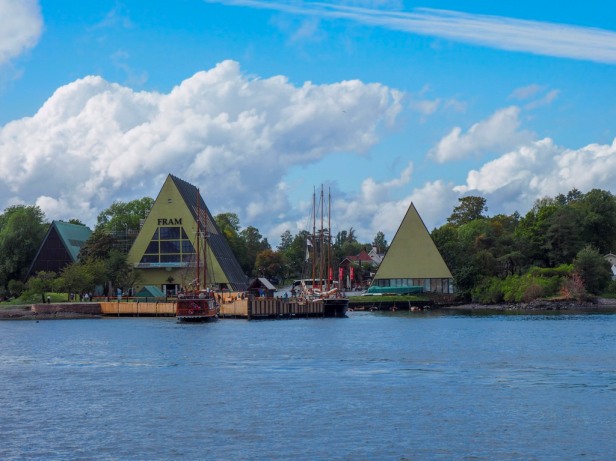
The tour also passes Bygdoy, Oslo’s museums island where you find the famous Fram Museum, the Viking Ship Museum and the Norwegian Folk Museum, which includes an open-air part with more than 150 historic houses brought here from all parts of Norway. If you want to visit the museums island, you need to take a ferry running regularly from Oslo harbour in front of the City Hall (the same where also the Oslo Fjord cruises start).
The Oslo Fjord cruise lasts around two hours. It is running all year round also during the winter the service is less regular and depends on the weather conditions. Also take into consideration that the boats are open, so make sure to wear appropriate clothes as even in the warmer seasons there might be a fairly cold wind.
Have you been to Oslo yet? Let me know about your experiences.
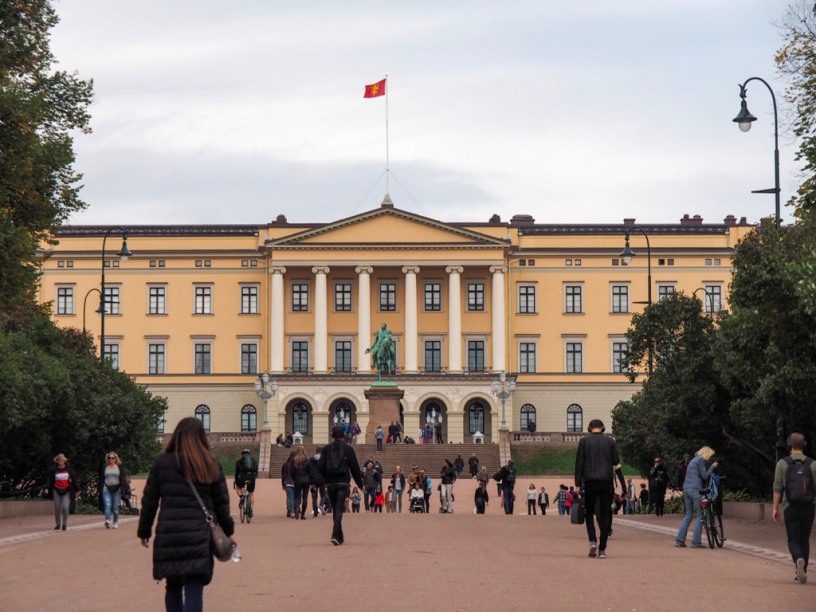




















These pictures are beautiful! I definitely have to visit Oslo some day!
LikeLike
It is a great city. I am sure you will like it!
LikeLiked by 1 person
Wow you have seen quite a bit of Oslo! Such a lovely city! We have written some posts about it too. I personally LOVE the Oslo Opera house, the architecture but also the accoustics at night during a performance. Love the National Gallery as well, and the Kon Tiki Museum and the Folk Museum. Have been there three times now and still want to go back 😉 Great photos by the way of the Opera House, love the perspective you took with the little iceberg in the foreground! Marcella
LikeLike
Thank you Marcella. It’s really a fantastic city. Sounds like you have seen a lot of it too!
LikeLiked by 1 person
Looks incredible and very beautiful. You couldn’t identify 2,3 night’s at the Grand Hotel for possibly maybe 10 people. It is my big 60 Jan 20th. It will very likely be in May, June ideally. Travelling from Newcastle Airport likely. I have a lot of health issues and classed as 30 per cent disabled. Won a Oslo T shirt actually a few months ago. Obviously looking at all the major attractions. Want the best deals going. We are very classy Ladies who like the 5 star luxury treatment at the best deals. Who knows if it is a booking for 10 whether I possibly may go free ? Shy Bairns get nowt ! A WearSider, Geordie expression. This year I can honestly say has been the worse year of my life. So 2019 praying to God that it is the opposite ! Heavenly trip to Oslo with Great Friends and hopefully maybe my 2 older Sisters. Will be much obliged if someone is connectable to discuss this. My Good Friend Kay has been to your beautiful City on a few occasions .Make my day !
Kind regards to whoever gets back to me about this. Yours very sincerely. Linda Carling. Miss.
LikeLike